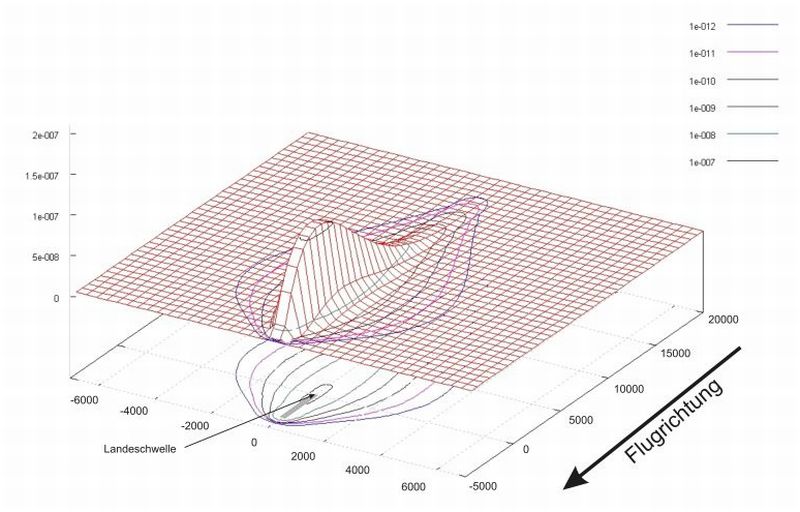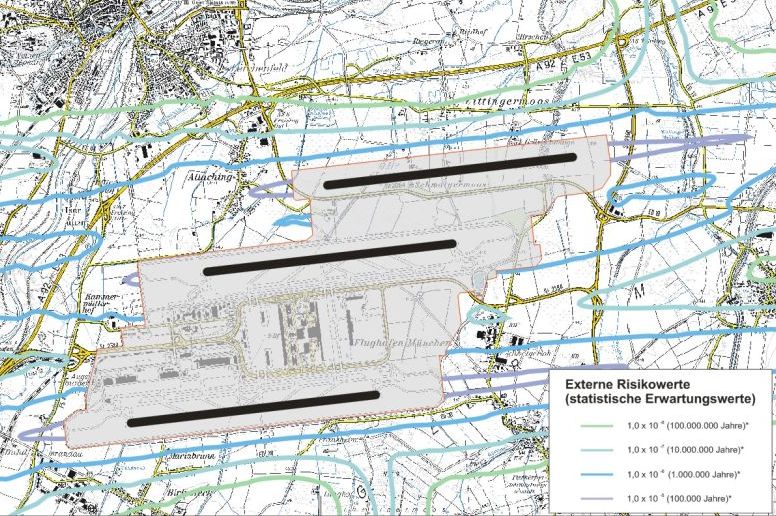The External Risk Model is used to quantify the risk to third parties not involved in air traffic, e.g. residents and employees in the vicinity of the airport. Based on the probability calculation, this establishes a link between the probability of an aircraft staying at a certain location in the investigation area, the probability of a crash there and, finally, the local destruction potential, also taking into account hazardous facilities such as tank/gas storage facilities.
Here so-called probability density functions are modeled. These functions are essentially calibrated by empirical surveys from databases and by mapping energetic propagation characteristics under different topographic conditions. The result of the calculation procedure is statements on the probability that a human being will die as a result of an aircraft accident if he is permanently at the corresponding location.
In connection with current planning approval procedures, an important detailed investigation is of particular importance: the influence of accident facilities according to SEVESO III on the external risk in the vicinity of airports – especially in the area of approach and departure routes. In the event of internal or external disruptions to normal operations, such facilities also pose a health risk to persons outside the plant premises. With the aid of physical accident models, which are developed in cooperation with plant experts, it is possible to simulate in detail not only the actual aircraft crash (primary event) but also any secondary event that may have been triggered.
Isoline representation The available calculation methodology is now required by approval authorities in Germany and abroad as a central evaluation instrument for the environmental compatibility, regional planning and approval capability of expansion and new construction projects in the airport sector. Despite the lack of legally prescribed limit values, this tool allows relative assessments to be made on the basis of quantitative results.
The model was used extensively and successfully within the planning approval procedure for the construction of a 4th runway at the Frankfurt/Main Airport. Due to its achievable accuracy in international competition, it stood methodically against alternative calculation methods.


